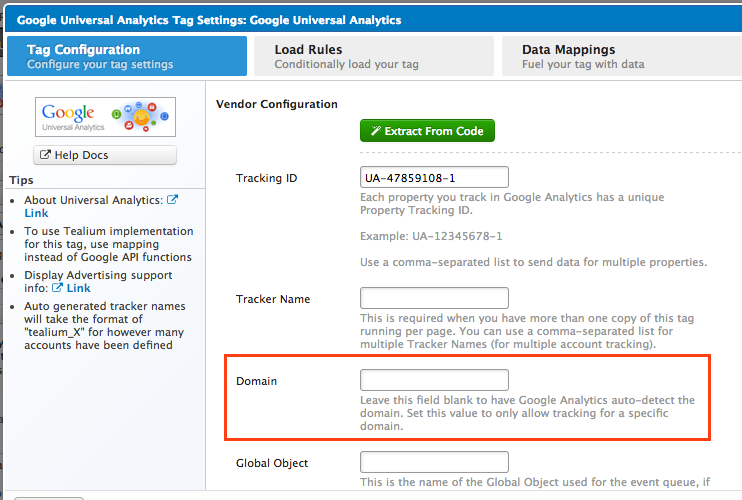Setting Up Google Universal Analytics Cross-Domain Tracking
Cross domain tracking is the ability to track a user’s session across separate domains to create a complete view of a user’s actions.
As of July 1, 2023, Google Universal Analytics properties stopped processing hits. This tag has been deprecated and no longer available in the tag marketplace. For the current tag, see Google Analytics 4.
For example, if you have two domains interlinking to each other www.example.com and www.another-domain.com, Google Universal Analytics, by default, would count a single user who visited both properties as two separate users with two separate sessions. By enabling cross-domain tracking, the user will be represented as a single user between both domains.
Tag Configuration
Google Universal Analytics is already enabled to track across multiple subdomains. For example: test.example.com, example.com, store.example.com. If you have specific subdomains to be tracked enter them in the Domain field..

Cross-Domain Setting
-
In the Google Universal Analytics tag configuration, toggle the Cross-Domain Tracking drop-down to On.
-
In the Cross-Tracking Domains field, add a comma-separated list of the domains you want to enable cross-domain tracking for.
Do not insert a space after the commas.

-
Save and publish your changes.
Validation
To ensure that your domains are tracking users correctly, navigate to one of your domains and click a link that takes you to your second domain. You should see the Google Universal Analytics cookie value appended in the URL and would read as _ga= with a long string of numbers.
In the screenshot below, I navigated to www.example.com and clicked a link that lead me to www.another-domain.com. Notice how the _ga tracking code is now in the URL:

This confirms that cross-domain tracking is working on expected from the browser.
This page was last updated: July 17, 2023